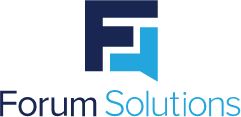Project Logic: Common-sence Principles for Impactful Project Management, Part 1 of 2
By Ben Heege
Introduction
All companies have projects, and many organizations have Project Managers. And though there are many available methodologies and software tools, it is estimated that nearly 7 out of 10 projects are considered to fail by the organizations which undertook them.
“Every member of a project team should have a clear and impactful role to play in project success.”
Whatever your role in a project, whether you hold the title or credentials of a Project Manager or some other role, any business effort can benefit by applying a handful of simple, intuitive, and customizable principles and tools which are necessary and sufficient to accomplish the most critical aspects of delivering a project, without getting bogged down in the documentation doldrums or hung up in analysis paralysis. This first installment of a two-part article will outline a few suggestions, along with recommended best practices and pro tips to optimize time and maximize impact!
Principle #1: Lead by Showing Up
Some organizations struggle to maximize a) collaboration energy, b) time spent in meetings, and c) effective follow-through.
A Project Manager can set the tone of working norms within any project. Whether you are working with a seasoned team of collaborators or bringing together a working group for the first time, every project is an opportunity to reset ways of working to meet the needs of the project objectives.
What is it?
The behavior and action of the Project Manager role, leading by example to demonstrate:
Organization and thinking ahead by demonstrating command of the vision and goals for project success, and the activities, resources, and timing needed to get there.
Effective follow-through by facilitating working and meeting times to match the planned agenda, and by focusing the team on actions and outcomes to meet project goals.
Best Practices:
Demonstrate discipline by publishing advance meeting agendas based on the current project needs and by publishing meeting notes to communicate meeting outcomes and next steps.
Look for opportunities – at the beginning, in the middle, and at the completion of projects – to build interpersonal team connections and celebrate successes.
Pro Tip:
Volunteer, even when you should not have to. The Project Manager who demonstrates willingness to take ownership of a task outside their typical set of responsibilities is modeling the contribution which may be asked of all the team members at some point during the project.
Principle #2: Trust the Team
Every member of a project team should have a clear and impactful role to play in project success. A Project Manager is uniquely positioned to identify project needs and link those objectives to the resources available. It is okay to balance trusting the expertise of team members and giving them space and freedom to do their best work, while still maintaining accountability to the project objectives and to the overall plan.
What is it?
The behavior and action of the Project Manager role, seeking to:
Match project work to team expertise by empowering the team members to contribute to the details of the project plan and make it clear who owns what task.
Highlight knowledge gaps impeding project progress by asking the team for other expert resource recommendations when needed.
Drive accountability to all team members by conducting regular reviews and updates to project plans with the full working team.
Best Practices:
At the outset of the project, check the planned Scope and Schedule against the available team Resources, to confirm that the assembled team has the knowledge and capacity to deliver on the expectations for the project.
Throughout the life of the project, assign clear ownership to team members for actions needed to address open work or challenges.
Pro Tip:
Conduct periodic “sanity check” analysis on your Integrated Project Plan and other documents to check if any team members are taking on too much, or too little, based on their capacity.
Principle #3: Leverage Leaders
John C. Maxwell wrote that "Leadership is not about titles, positions or flowcharts. It is about one life influencing another", yet it is also true that titles and positions are a reality of most organizations.
A Project Manager or team member may feel stuck in the middle of competing teams, titles, individuals, and priorities, and this can be a challenge to execute work in a way that feels predictable, straightforward, and efficient.
What is it?
The behavior and action of the Project Manager role, seeking to:
Define clear lines of influence and authority among the many stakeholders of the project.
Make the most of the power in the room by escalating to a higher authority when needed, before problems begin impacting project progress or health.
Find the hidden leaders in your project team who bring the extra spark of energy and enthusiasm, even if they do not hold the title or the experience to match.
Best Practices:
Before project work begins, define the decision-making structure which the project will utilize. This may be a combination of teams and levels in the organization and should include clear roles and responsibilities across the structure, as well as types and frequency of communication.
Communicate, communicate, communicate! Share information on project progress and challenges and connect those updates to the project goals and timeline, especially where leadership support is needed.
Pro Tip:
Consider a multi-tiered leadership structure, with a “core team” of experts delivering daily work, an “advisory team” with authority to make decisions on the scope and direction of project work, and an executive “steering committee” to respond to escalated issues, remove roadblocks, and drive communication to the broader organization.
Conclusion
Project Management is a discipline utilized across industries and organizations around the globe, with as many approaches and applications as can be imagined.
We have looked at a few common sense and customizable principles which can add value to any project. In the second installment, we will focus on several tools which can be intuitive and accessible to most people regardless of training or experience, and which can flex to project needs whatever the situation or business goal.
For more common-sense principles, see Project Logic: Common Sence Principles for Impactful Project Management, Part 2 of 2.
Ben Heege a Forum Solutions Senior Consultant with extensive experience in project and program management, Agile product delivery, and operations. Ben holds a B.A. in Communication Arts from the University of Wisconsin, and a Certificate of Business Administration from the Foster School at University of Washington.
Forum Solutions is a management consulting company dedicated to crafting and delivering transformational outcomes for our clients, our colleagues, and our community. With our help, clients become more agile, resilient, and connected, bringing great ideas to fruition with brilliant results. From start-ups to the Fortune 50, business leaders rely on Forum Solutions to help them form and realize their strategies. Our company is a certified Woman Owned Business that believes in developing and growing our colleagues, company, and region in a socially conscious way.




